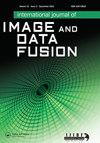使用深度学习对SAR和PolSAR图像进行分类:综述
IF 1.8
Q3 REMOTE SENSING
International Journal of Image and Data Fusion
Pub Date : 2020-01-02
DOI:10.1080/19479832.2019.1655489
引用次数: 49
摘要
遥感技术和微波传感器的发展探索了遥感在不同领域的应用。微波遥感具有提供无云、全天候图像和昼夜图像的优势。合成孔径雷达(SAR)图像具有这种能力,这促进了SAR和PolSAR图像在土地利用/土地覆盖分类和各种其他应用中的应用。本文介绍了用于不同区域分类的不同极化分解技术。本文的总体目标是帮助研究人员确定适用于SAR或PolSAR图像分类的深度学习技术。本文还分析了在特定研究领域吸收新思想的深度网络的架构。讨论了微波遥感中使用的基准数据集,并对这些数据的分类结果进行了分析。文中还对其中一个基准数据集的实验结果进行了讨论。本文讨论了SAR/PolSAR图像研究的挑战、范围和机遇,这将有助于深入研究这一领域的研究人员。本文章由计算机程序翻译,如有差异,请以英文原文为准。
Classification of SAR and PolSAR images using deep learning: a review
ABSTRACT Advancement in remote sensing technology and microwave sensors explores the applications of remote sensing in different fields. Microwave remote sensing encompasses its benefits of providing cloud-free, all-weather images and images of day and night. Synthetic Aperture Radar (SAR) images own this capability which promoted the use of SAR and PolSAR images in land use/land cover classification and various other applications for different purposes. A review of different polarimetric decomposition techniques for classification of different regions is introduced in the paper. The general objective of the paper is to help researchers in identifying a deep learning technique appropriate for SAR or PolSAR image classification. The architecture of deep networks which ingest new ideas in the given area of research are also analysed in this paper. Benchmark datasets used in microwave remote sensing have been discussed and classification results of those data are analysed. Discussion on experimental results on one of the benchmark datasets is also provided in the paper. The paper discusses challenges, scope and opportunities in research of SAR/PolSAR images which will be helpful to researchers diving into this area.
求助全文
通过发布文献求助,成功后即可免费获取论文全文。
去求助
来源期刊

International Journal of Image and Data Fusion
REMOTE SENSING-
CiteScore
5.00
自引率
0.00%
发文量
10
期刊介绍:
International Journal of Image and Data Fusion provides a single source of information for all aspects of image and data fusion methodologies, developments, techniques and applications. Image and data fusion techniques are important for combining the many sources of satellite, airborne and ground based imaging systems, and integrating these with other related data sets for enhanced information extraction and decision making. Image and data fusion aims at the integration of multi-sensor, multi-temporal, multi-resolution and multi-platform image data, together with geospatial data, GIS, in-situ, and other statistical data sets for improved information extraction, as well as to increase the reliability of the information. This leads to more accurate information that provides for robust operational performance, i.e. increased confidence, reduced ambiguity and improved classification enabling evidence based management. The journal welcomes original research papers, review papers, shorter letters, technical articles, book reviews and conference reports in all areas of image and data fusion including, but not limited to, the following aspects and topics: • Automatic registration/geometric aspects of fusing images with different spatial, spectral, temporal resolutions; phase information; or acquired in different modes • Pixel, feature and decision level fusion algorithms and methodologies • Data Assimilation: fusing data with models • Multi-source classification and information extraction • Integration of satellite, airborne and terrestrial sensor systems • Fusing temporal data sets for change detection studies (e.g. for Land Cover/Land Use Change studies) • Image and data mining from multi-platform, multi-source, multi-scale, multi-temporal data sets (e.g. geometric information, topological information, statistical information, etc.).
 求助内容:
求助内容: 应助结果提醒方式:
应助结果提醒方式:


